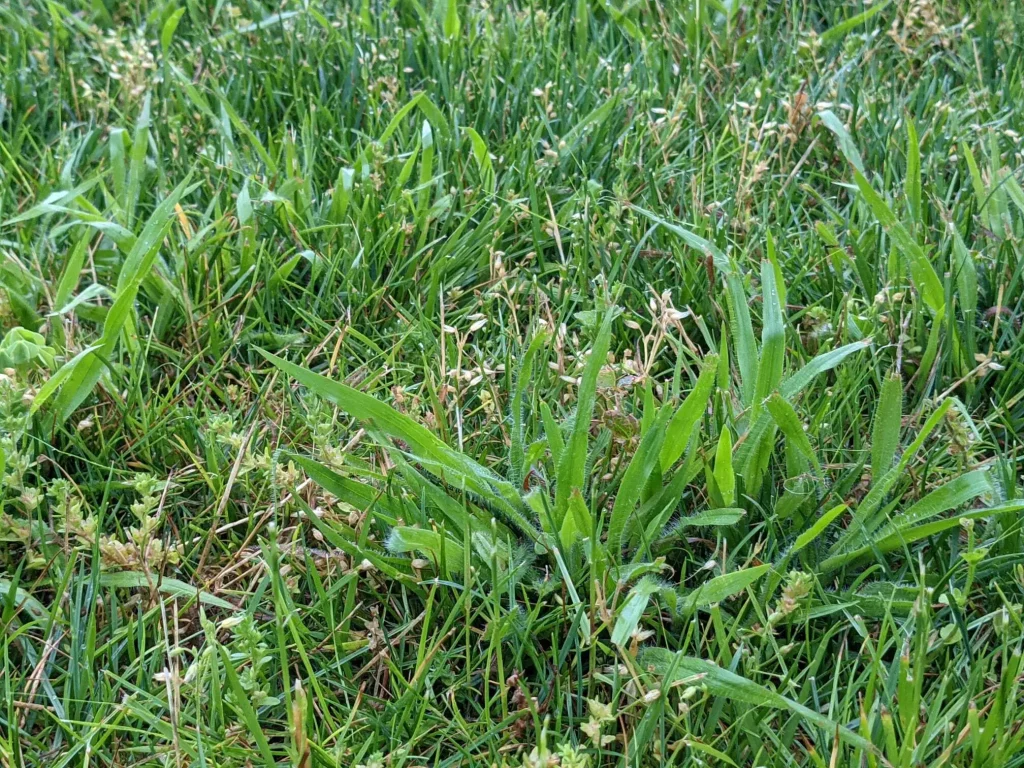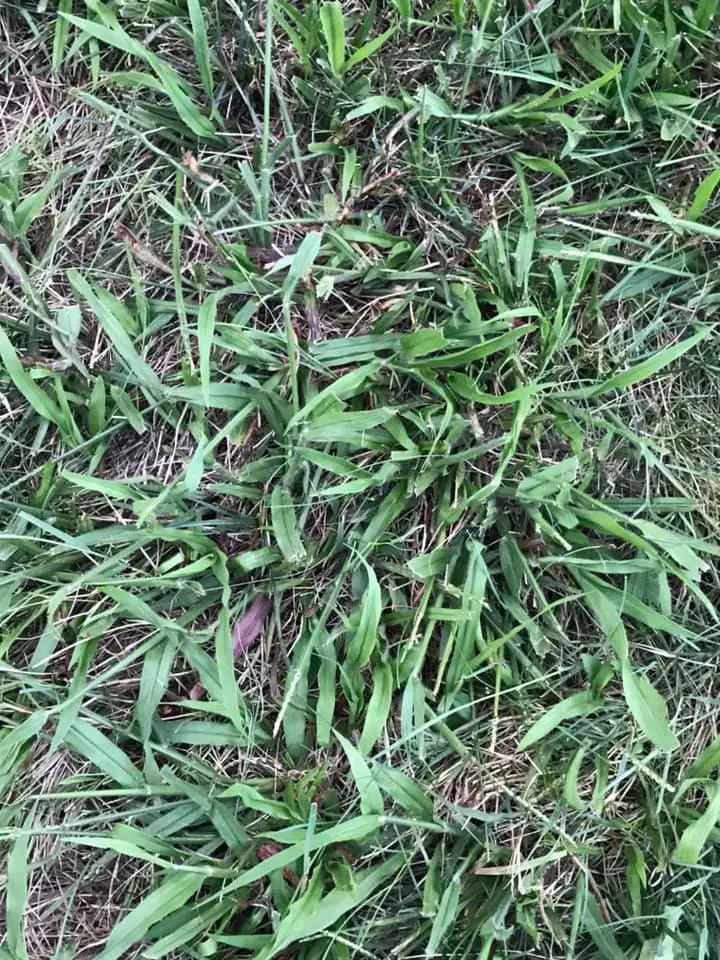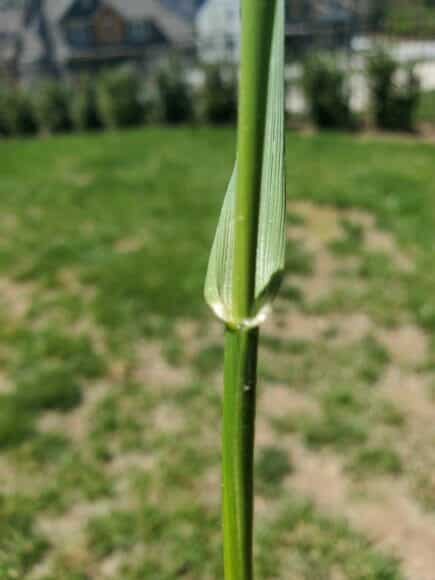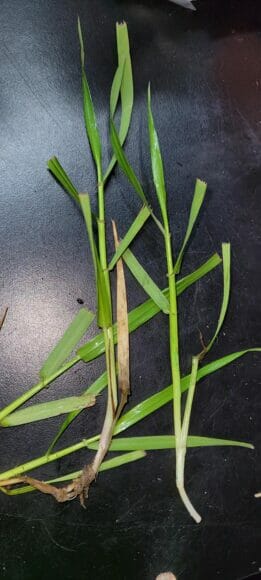In the war between crabgrass vs quackgrass, you’ll want to take any appropriate measures you can to ensure that it’s your lawn grass that is victorious. Keeping desirable lawn grasses free from weedy grass does sometimes feel like a war, but you can win it by learning how to remove and keep quackgrass and crabgrass from infiltrating your lawn.
Table of Contents
What Is the Difference Between Crabgrass and Quackgrass?
Crabgrass and quackgrass may look similar, but these two grass weeds are quite different. Crabgrass is a warm annual season, which means it sprouts back each year from crabgrass seeds. Unlike crabgrass, quackgrass is a cool-season perennial; this weedy grass develops a deep root system and returns each year, emerging from winter dormancy in the spring. While both of these grass weed plants have wide grass blades, only quackgrass has auricles that appear to grasp its stem. Crabgrass grass weed plants do not have these auricles.
In the fall, crabgrass usually becomes brown right after the first frost. With its hardy winter roots, quackgrass tends to remain green even late into the fall; in fact, in areas with mild winters, it might even remain green all year long.
Similarities Between Crabgrass and Quackgrass
Crabgrass and quackgrass may be quite different types of lawn invaders, but they can be difficult to distinguish from one another until you learn what to look for. The easiest way to tell them apart is by the clasping auricles mentioned above. Crabgrass does not have these auricles. Also, quackgrass usually emerges earlier in the spring than crabgrass. As a perennial, quackgrass begins to green up in early spring as it comes out of dormancy.
Crabgrass, on the other hand, doesn’t grow until its seeds germinate, which doesn’t occur until the warmer temperatures of mid or late spring. Another way to tell the plants apart is that crabgrass has a squashed look because its grass blades grow out in a prostate pattern. Quackgrass, on the other hand, has a vertical growth habit. Most experts will tell you that if you can pull up the grass easily, it’s probably crabgrass, which has shallow roots. The roots of quackgrass run deep.
Crabgrass Identification
Crabgrass is a largely opportunistic light green annual weed. It finds it easiest to sprout in bare patches of lawn. You’ve also probably noticed it growing in the cracks of sidewalk pavement or in areas where no other plants appear to thrive. Crabgrass is usually easy to spot with its sideways growth habit from a clump. Crabgrass usually doesn’t grow beyond two feet in length–and some varieties never grow beyond six inches. Crabgrass produces seed spikes. Each spike can produce thousands of crabgrass seeds. The seeds can remain viable in the soil for years.



Quackgrass Identification
Quackgrass has an upright growth habit and tends to have a more bluish color than surrounding lawn grass. It has auricles on the base of its leaves that appear to clasp around the stem and it can grow up to about 4 feet if left unmowed. It also develops seed pods that look like wheat. Although quackgrass produces seeds, it mainly spreads via its long rhizomes that may stretch up to five feet in length.



How to Treat These Unwanted Weeds
Before relying exclusively on weed killers to control crabgrass and quackgrass, remember that a healthy lawn is its best defense against grassy and broadleaf weeds. Whether you have warm-season or cool-season grasses, you’ll want to pay close attention to your lawn’s specific health needs so that it can ward off weed infestation.
To discourage quackgrass, set your lawn mower blades low; you should plan to mow quackgrass short in the spring. This will prevent the plant from building up a food supply in its roots. If you attempt to remove quackgrass by hand, you’ll have to remove all of the rhizomes, which can be quite difficult. Short spring mowing and spot treatments with glyphosate are the most reliable ways to get rid of quackgrass. Of course, glyphosate is a non selective herbicide, so you’ll need to be careful and be sure you only apply it to the weed itself and not your lawn grass.
To get rid of crabgrass, you hand-pull it before it develops its seed heads. Crabgrass roots are not deep. You can also apply a pre-emergent herbicide and post-emergent herbicide that are formulated for crabgrass. Ideally, you should apply your crabgrass preventer early in spring before the soil warms up enough for crabgrass seeds to germinate. Crabgrass killers are effective for getting rid of crabgrass but you may need to battle this weed in subsequent seasons as the seeds can remain viable for many years. Also, to prevent crabgrass, keep your lawn healthy and tend to bare patches quickly. A noxious weed like crabgrass loves to infiltrate bare patches in lawns.
Crabgrass vs Quackgrass FAQs
How do I get rid of quackgrass?
You can eliminate quackgrass by mowing it very short during the spring. This prevents the perennial grass from storing up adequate food in its root system. You can also use a non-selective weed killer to kill quackgrass. Hand-pulling quackgrass is not usually effective because of its long rhizomes and deep roots.
Are crabgrass and quackgrass the same thing?
Although crabgrass and quackgrass look remarkably alike, they are very different types of plants. Crabgrass is an annual grass, while quackgrass is a perennial grass. Both are wide-bladed grasses but crabgrass grows in a prostrate fashion while quackgrass grows vertically.

The past few years, I’ve been applying split applications if dimension at bag rate. I had a problem with quackgrass and some crabgrass. Last time, I used Scotts Halts, I just did 1 full application and I didn’t have any quackgrass or crabgrass. I’m experimenting and just putting down 1 full application of Halts thus year.
Peter. That’s a great idea to experiment. If there were to be one application only, I personally like Prodiamine.